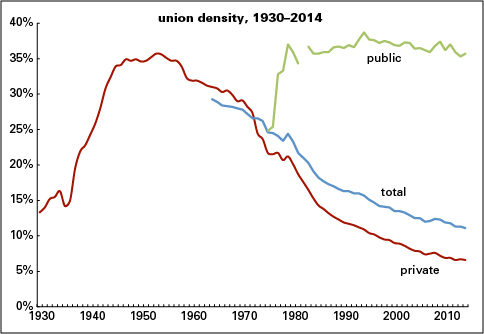It still pays to be a union member
 Union status matters for wages.
Union status matters for wages.
Overall, unionized workers earned 27 percent more than non-union workers measured by median weekly earnings for full-time workers, according to a new 2014 report from the Bureau of Labor Statistics.
The effect was especially pronounced for weaker, more discriminated-against demographic groups:
• YOUTH – The youngest group, aged 16–24, enjoyed a 28 percent union premium; the advantage declined with each successive cohort, down to 12 percent for the 65+ set.
• WOMEN – Women aged 25 and older enjoyed a 27 percent premium; white women had a 32 percent premium; black women saw a 34 percent premium; Hispanic women had a 46 percent premium.
• MEN – White men (16 and over) had a 20 percent union advantage; 25 and older had a 15 percent premium; for black men, the premium was 29 percent; and for Hispanic men, it was 44 percent.
• ASIAN – Asian men were a notable exception, with the unionized earning five percent less than the non-unionized—but Asian women showed a 14 percent union premium.
It’s no wonder employers hate unions so much; they can vastly improve the wages and working conditions for their members.

(Excerpt: In These Times)


Leave a Reply